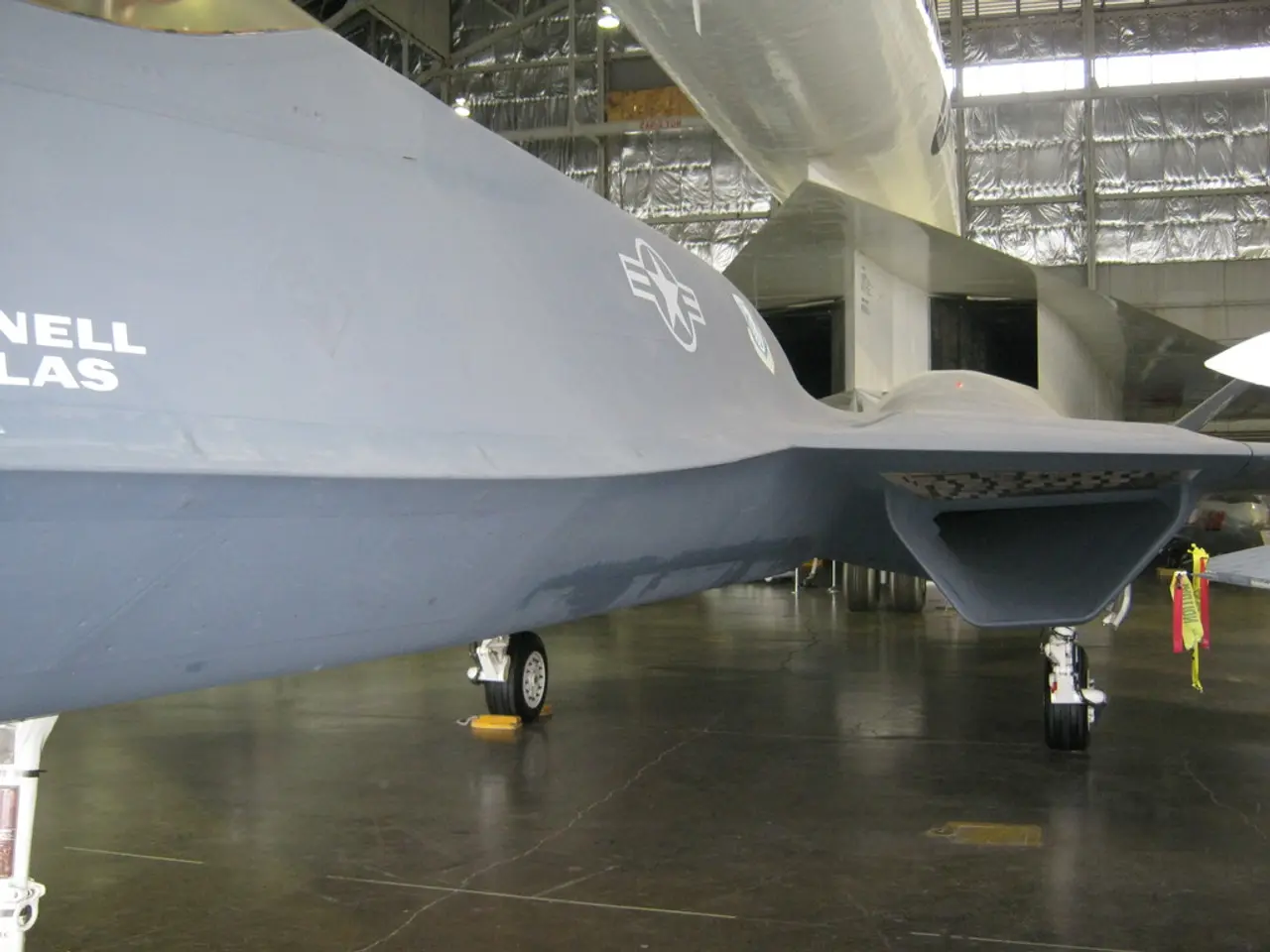Key Insights from NTSB Discussion on the Midair Collision at DCA Airport
The National Transportation Safety Board (NTSB) held three days of hearings this week, aiming to shed light on the deadly midair collision that occurred near Ronald Reagan Washington National Airport on January 29. The tragic incident claimed the lives of 67 people, making it the deadliest U.S. aviation accident in decades.
At the heart of the investigation is the U.S. Army Black Hawk helicopter, which was found to have an outdated barometric altimeter. These altimeters, common in older Army helicopters, can be off by up to 80 feet, according to Army representatives. The specific issue with the Black Hawk's altimeter was its lack of an air data computer, a feature found in newer versions, which provides more precise altitude measurements.
The NTSB found similar altitude discrepancies among other helicopters in the same unit, highlighting a systemic issue with equipment not keeping pace with modern aviation safety requirements. The lack of accuracy contributed to the Black Hawk flying higher than it should have been near civilian flights, increasing the risk of collision.
The use of night vision goggles by the Black Hawk pilots further complicated the situation by narrowing their field of view and reducing their ability to visually identify other aircraft. This sensory limitation, combined with inaccurate altimeter data, contributed to the fatal midair collision between an American Airlines regional jet and the Black Hawk.
NTSB Chairwoman Jennifer Homendy has suggested that the Black Hawk pilots might not have been aware of their altitude due to a malfunctioning barometric altimeter. The radar altimeter on the Black Hawk measures the distance between the aircraft and the ground, while the barometric altimeter uses air pressure to estimate altitude.
The FAA is also under scrutiny for not acting on the safety concerns of its employees. Chairwoman Homendy criticised the agency for not addressing the issue of the Army helicopter route's proximity to commercial flights landing at the airport. Air traffic controllers at DCA say a push to modernize equipment won't fix deeper problems.
In March, Transportation Secretary Sean Duffy permanently restricted nonessential helicopter operations around DCA and eliminated mixed traffic between helicopters and fixed-wing aircraft. The air traffic controllers at DCA were expected to "make it work", sometimes including using an additional runway for arrivals. On the night of the accident, one controller was performing both roles.
The collision occurred at an altitude of 278 feet, even though the Army helicopter should not have been flying above 200 feet on that portion of the route. The crash resulted in the loss of lives of U.S. and Russian figure skaters, among others.
A working group at the airport had considered the possibility of moving or eliminating Route 4, but were told they were unable to do so due to continuity of government operations or security. The FAA is currently facing a national shortage of air traffic controllers, which adds to the concerns about the safety of the airspace around DCA.
[1] Army representatives have stated that it is not unusual for barometric altimeters to be off by up to 80 feet. [2] Federal investigators held three days of hearings this week to shed light on the deadly collision. [3] Family members of the victims of American Airlines flight 5342 attended the National Transportation Safety Board investigative hearing in Washington on Wednesday. [4] The crash resulted in the death of 67 people, making it the deadliest U.S. aviation accident in decades. [5] Both actions were recommended by the NTSB. [6] Nick Fuller, the FAA's acting deputy chief operating officer, stated that staffing at DCA was commensurate with other similarly sized facilities. [7] In March, Transportation Secretary Sean Duffy permanently restricted nonessential helicopter operations around DCA and eliminated mixed traffic between helicopters and fixed-wing aircraft. [8] At DCA tower, one controller often handled helicopter traffic while another monitored fixed-wing aircraft. On the night of the accident, one controller was performing both roles. [9] FAA staff had warned about the Army helicopter route's proximity to commercial flights landing at the airport, but the agency didn't act. [10] The collision occurred at an altitude of 278 feet, even though the Army helicopter should not have been flying above 200 feet on that portion of the route. [11] The radar altimeter on the Black Hawk helicopter measures the distance between the aircraft and the ground, while the barometric altimeter uses air pressure to estimate altitude. [12] The midair collision between an American Airlines regional jet and a U.S. Army Black Hawk helicopter occurred near Ronald Reagan Washington National Airport on January 29. [13] Air traffic controllers at DCA say a push to modernize equipment won't fix deeper problems. [14] NTSB Chairwoman Jennifer Homendy has suggested that the Black Hawk pilots might not have been aware of their altitude due to a malfunctioning barometric altimeter. [15] The two aircraft involved in the collision were a PSA Airlines flight and a U.S. Army Black Hawk helicopter, both on separate missions. [16] A working group at the airport had considered the possibility of moving or eliminating Route 4, but were told they were unable to do so due to continuity of government operations or security.
- The Army has acknowledged that it is not uncommon for barometric altimeters to be off by up to 80 feet.
- Federal investigators, including the National Transportation Safety Board (NTSB), held three days of hearings this week to investigate the deadly midair collision.
- Family members of the victims of American Airlines flight 5342 attended the NTSB investigative hearing in Washington on Wednesday.
- The crash resulted in the death of 67 people, making it the deadliest U.S. aviation accident in decades.
- Both the NTSB and the FAA are facing scrutiny for not addressing safety concerns related to the Army helicopter route's proximity to commercial flights at Ronald Reagan Washington National Airport.
- In March, Transportation Secretary Sean Duffy permanently restricted nonessential helicopter operations around DCA and eliminated mixed traffic between helicopters and fixed-wing aircraft.
- On the night of the accident, one air traffic controller was performing both helicopter and fixed-wing aircraft traffic roles at DCA tower.
- The midair collision occurred between a PSA Airlines flight and a U.S. Army Black Hawk helicopter, both on separate missions.
- A working group at the airport had considered the possibility of moving or eliminating Route 4, but were unable to do so due to continuity of government operations or security concerns.
- The FAA is currently facing a national shortage of air traffic controllers, adding to concerns about the safety of the airspace around DCA.
- The radar altimeter on the Black Hawk helicopter measures the distance between the aircraft and the ground, while its barometric altimeter uses air pressure to estimate altitude.
- The collision occurred at an altitude of 278 feet, even though the Army helicopter should not have been flying above 200 feet on that portion of the route.
- Other aircraft in the same Army helicopter unit were also found to have similar altitude discrepancies, suggesting a systemic equipment issue.
- The use of night vision goggles by the Black Hawk pilots reduced their ability to visually identify other aircraft, complicating the situation further.
- The incident occurred within the general news, crime-and-justice, politics, policy-and-legislation, war-and-conflicts, finance, aviation, transportation, aerospace, and business industries.








